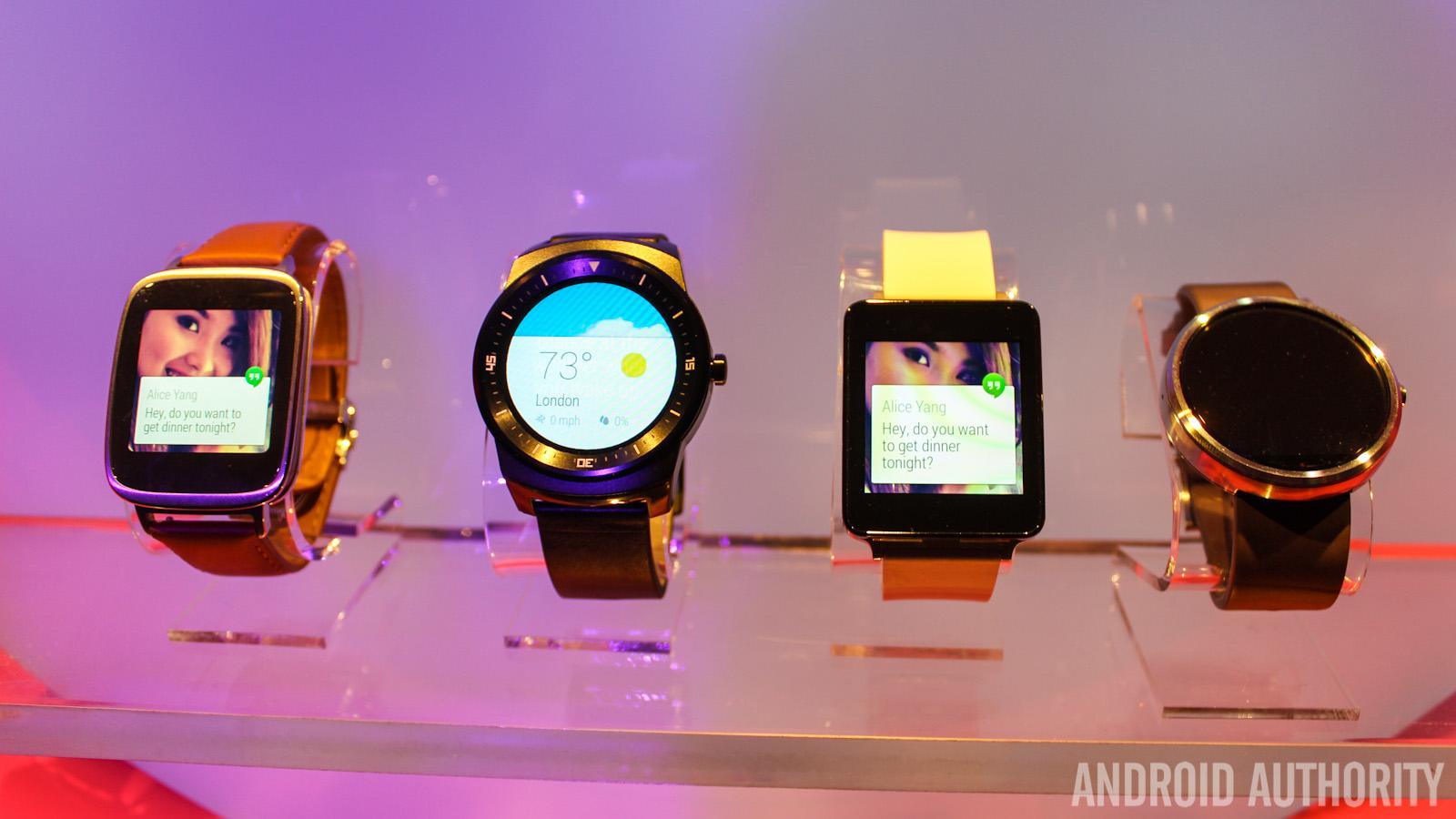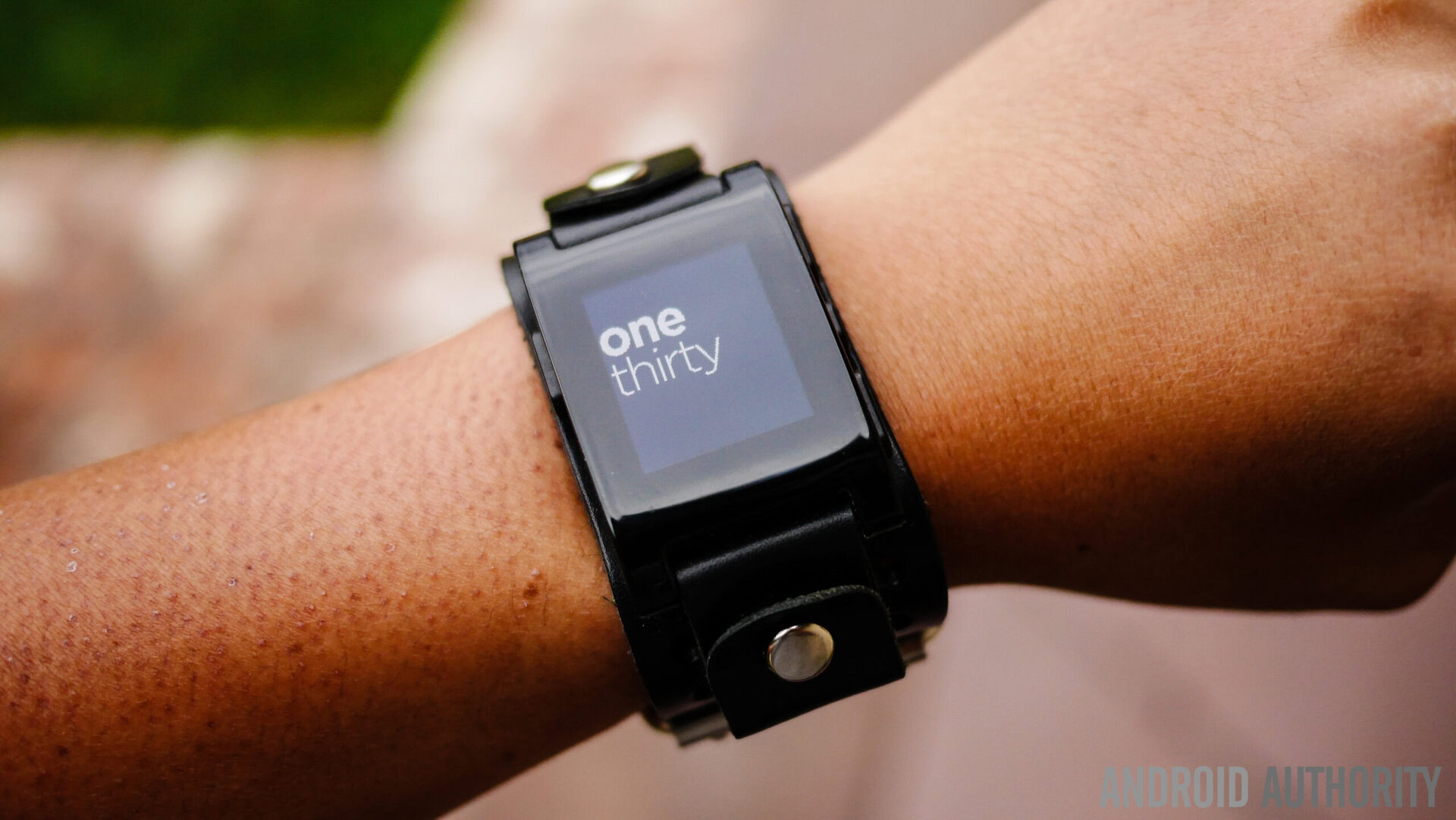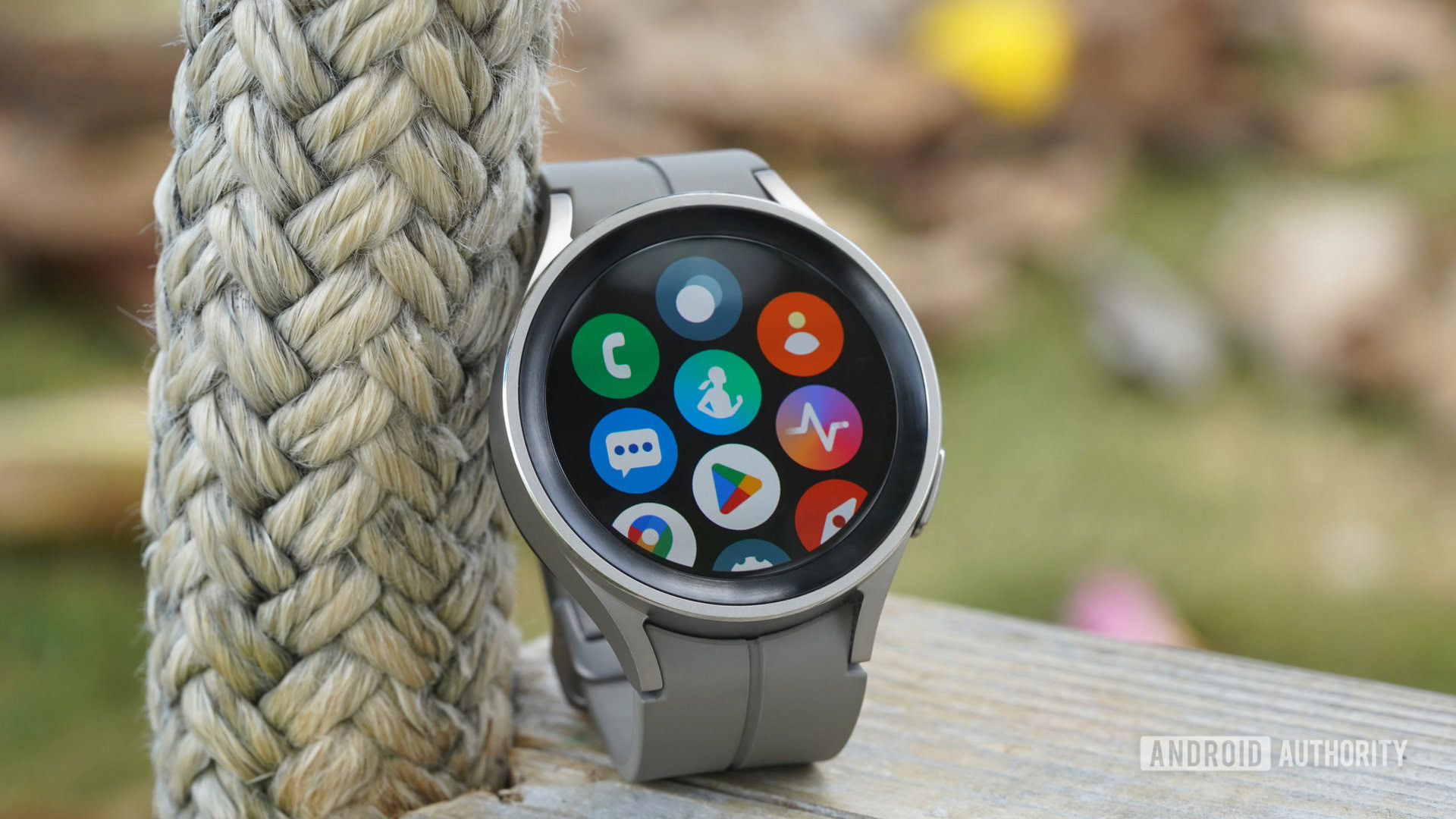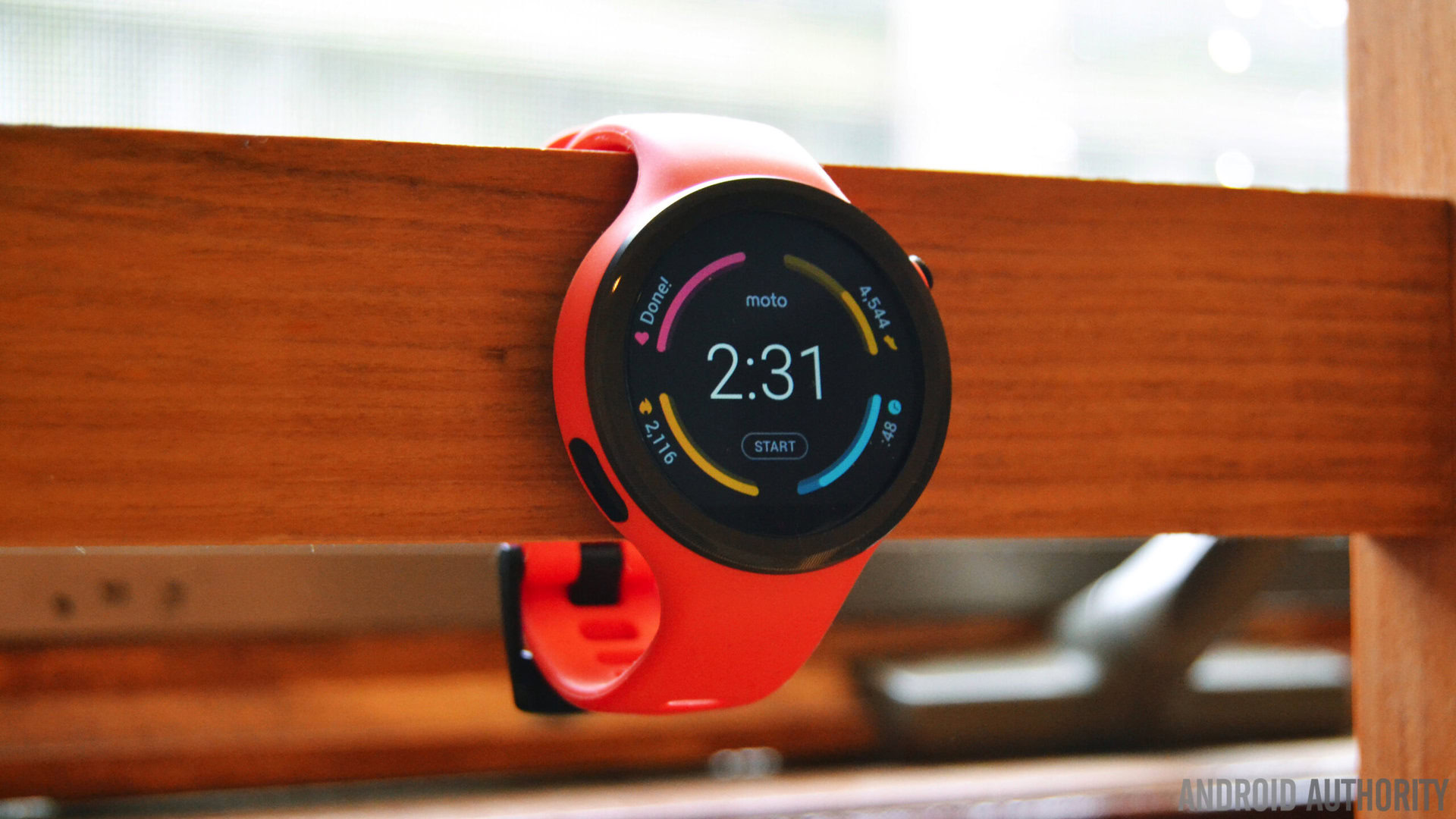Affiliate links on Android Authority may earn us a commission. Learn more.
State of wearables: Where is this product category headed?

In many ways, this year has been the Year of Google. First, Google challenged Apple’s lead in the premium smartphone market by axing the popular Nexus line and replacing it with the critically-acclaimed, high-priced Pixel and Pixel XL. With the advent of the Pixel phones, we finally got to experience Google’s Daydream platform, which is essentially the future of VR for Android devices.
But we’ve seen a lot of other impressive tech, too. Let’s not forget the impressive “budget flagship” we had in the OnePlus 3 and 3T, dual-camera advancements from LG and HUAWEI, the Samsung’s Note 7 would’ve likely been the most acclaimed device of the year, were it not for its unfortunate tendency to spontaneously combust, and the Galaxy S7 line has been the most well-received Samsung phones in recent memory.
If you haven’t noticed, basically all of the year’s best gadgetry are smartphones with perhaps the most notable admission being wearables. Why is it that wearables seem all but forgotten in 2016? And what does that say about the future of wearables? Is the future for smartwatches, fitness trackers, and other wearable tech as grim as it seems?
Where did wearable tech get its start?
Although wearable tech seems relatively new, this category of tech has been trying to sputter to life for at least a few decades. The digital watch — which is passé today — first emerged in 1972 and could be considered the first step toward what would eventually become the Apple Watch and Android Wear devices. However, after some brief popularity, most of the wristwatch-wearing crowd returned to the more classic and refined analog watches of yesteryear. Then, in 1984, the Seiko RC-1000 Wrist Terminal (yes, that was its actual name) was the first wristwatch to interface with a computer and was, itself, powered by a computer chip. Nineteen years later, Fossil released its Wrist PDA, which was essentially a PalmOS PDA on the wrist. But none of these earlier devices were anything more than a novelty and a bleak reminder of the technological limitations of the time.
Arguably the first notable smart wearable device — which is largely credited with igniting the wearable tech revolution — was the Pebble. It launched as a Kickstarter campaign in April 2013, featuring a monochrome display and, importantly, its own Pebble OS operating system that was compatible with both Android and iOS devices. After the end of its Kickstarter campaign, the Pebble was launched at Best Buy where it quickly sold out in five days. This prompted the popular OEMs — Apple, Google, LG, Microsoft, Sony, and numerous others — to develop their own wearables, but Samsung was first with the Galaxy Gear, which was based on Android 4.2, though the line later moved over to Samsung’s own Tizen OS. Since then, most consumer tech manufacturers have released some type of wearable device, including LG’s G Watch series, the HUAWEI Watch, Samsung’s Tizen-powered Gear S series, Sony’s SmartWatch series, the Apple Watch, and the Moto 360 series, among others.

It was important for us to take a look back at the (relatively brief) history of wearable tech because it sets the tone for much of the rest of this discussion. First, we should note that the first smartwatches weren’t created to fulfill a need that wasn’t already being met. As it stands, the smartwatch’s niche is mostly fulfilled by the smartphone that both predates it and is much more effective at fulfilling most communication needs. The potential convenience of receiving notifications without interacting with a smartphone is overshadowed by the fact that we must still defer to our smartphones for anything but the most basic of interactions with these notifications. Therefore, interacting with the smartwatch is often an unnecessary or superfluous step between receiving the notification and responding to it.
Of course, it’s worth noting that the smartwatch isn’t the only form of wearable tech; Bluetooth headsets (the kind for hands-free calling), virtual reality headsets, fitness trackers, and sports watches are also considered wearable tech. The reason why we tend to think of smartwatches as the epitome of wearable tech is because smartwatches are the wearable that has the most versatility and the widest appeal.
Let’s look at the numbers
As stated previously, Pebble was the first smartwatch to launch, selling approximately 400,000 units in its debut year. In 2014, Pebble sales increased to about 700,000 units before becoming quite stunted. In fact, the company returned to Kickstarter earlier this year to raise funding for the Pebble 2, Pebble Time 2, Pebble Time Round, and a new product called the Pebble Core, which combined a wearable device with Amazon Alexa support. The campaign was successful in that it was funded and most of these new Pebble products are now available in traditional retail locations; however, the Pebble Core is yet to see a commercial release and the future for that is pretty bleak considered the recent Pebble sale.
Although Pebble may have been the first big name in wearables, Samsung quickly claimed the majority of the wearables market, almost doubling Pebbles sales in 2014 at 1.2 million Gear units. Part of the reason for Samsung’s early success was its shotgun approach to wearables; rather than making a single wearable, Samsung released several different wearables with multiple operating systems at once. With the release of its first Android Wear smartwatch, Samsung had six models of smart- and fitness watches on the market: the Samsung Gear (Tizen OS), Gear Live (Android Wear), Gear Fit (Tizen OS), Gear 2 (Tizen OS), Gear 2 Neo (Tizen OS), and the Gear S (Tizen OS).
Apple has seen a dramatic drop in Apple Watch sales, having sold 1.1 million units during Q3 this year compared to just under 4 million last year.
While Samsung might have dominated wearables in those early days, the honor of ‘First Android Wear Device’ actually goes to the LG G Watch, but its lead was slim. Around the same time, both the Samsung Gear Live and Moto 360 launched with the latter device’s round design being especially popular. From summer 2014 to the end of the year, about 700,000 Android Wear devices were sold.

But the game-changer was the highly-anticipated Apple Watch, which officially launched in April 2015 and garnered $1 billion in revenue in a matter of weeks. Like most other Apple products, the initial response to Apple’s debut in the wearable market was overwhelming. Before the Apple Watch, the average cost of a smartwatch was just $189; however, shortly after the launch of the Apple Watch, the average smartwatch cost jumped by more than half to $290. Unfortunately, Apple has been shy when it comes to their specific sales numbers, but analysts estimate that 12 million Apple Watch units shipped over the eight months it was available in 2015. Clearly, there was a demand for high-end smartwatches, right? Well, this year’s numbers are a bit more telling about the current state of wearable technology.
Comparing third-quarter sales this year to third-quarter sales last year, wearable tech sales have dropped by 52 percent overall, according to CNN. To be clear, this figure is accounting for all smartwatches made by all OEMs and running all operating systems. Even Apple — who quickly dominated the smartwatch market and recently released a second generation Apple Watch — has seen a dramatic drop in Apple Watch sales, having sold 1.1 million units during third quarter this year compared to just under 4 million units during the same period last year; this amounts to a decrease of 72 percent while still making up 70 percent of smartwatch sales overall.
Too much and not enough
If you consider the shrinking market share that wearables currently have in consumer tech overall, it’s not surprising that a number of OEMs have chosen not to develop new models of wearables in the upcoming year. For instance, Motorola — behind arguably the most successful Android Wear device we’ve seen thus far — announced there’d be no new Moto smartwatch coming in 2017. Similarly, Google pushed back Android 2.0 for launch sometime in 2017 after originally scheduling its release this past fall.
There’s the issue of wearable devices attempting to fill a niche that was already mostly occupied by the smartphone itself
When you step back and consider the entire picture, a couple points become quite obvious. First, there’s the issue of wearable devices attempting to fill a niche that was already mostly occupied by the smartphone itself. As far back as the advent of the digital watchface in the 1970s, it seems that the intermittent success of wearable tech could mostly be attributed to the novelty factor rather than to its utility. The fact remains that wearable tech represents a pretty substantial investment while being essentially an extension of your smartphone’s notifications. For the most part, you must still own and carry a smartphone to use wearable tech. Even on wearable devices that can make and receive calls and function completely independent of a smartphone, the experience of using a smartwatch for things like web browsing, sending and receiving messages, media consumption, and numerous other tasks pales in comparison to using a smartphone, which was already designed to make these computer-level functions ulta-portable.
Another issue is the cost of adopting wearable technology. Over time, we expect any new technology to decline in price and become more affordable, but any decline in cost will likely be offset by limitations in utility. A device’s high price can be more easily justified when there’s the novelty of being an early-adopter; however, there ultimately comes a point when we want to see some sort of payoff, but wearable tech doesn’t have enough to offer us right now to justify the cost of adoption and the conscious effort it takes to accommodate wearable tech in one’s daily life. Thus, it seems that wearables are currently little more than a passing attraction.

Is wearable tech in our future?
It’s difficult to say what the future of wearable tech will be, but we’ve surely not seen the end of the wearable revolution. After all, the traditional, non-smart analog wristwatch is still a staple accessory for many people, so the wrist still has untapped potential when it comes to consumer technology.
Today, we see two different types of wearable tech: Devices centered on function and devices that offer an experience. Fitness trackers and health-related wearables offer something that smartphones mostly can’t do, so this class of wearables will likely remain. On the other hand, smartwatches like the Moto 360 and HUAWEI Watch are a novelty and luxury item; they don’t currently offer anything that can’t be done (and better enjoyed) on the larger display and with the better performance of a smartphone. Instead, smartwatches are a high-cost extension of a very limited number of smartphone features that can be made more accessible on the wrist.
A number of non-tech brands like Armani and Kate Spade are getting into the wearable market with hybrid devices. Typically a hybrid will look like a standard analog wristwatch, but it still has Bluetooth connectivity, fitness tracking capabilities, and a number of other smart features. Since they don’t have to power digital displays and processors, they have outstanding battery life, making them very low-maintenance. The lack of display means that hybrids aren’t meant to be an extension of your phone’s notifications; instead, hybrid smartwatches are much more focused. It’s possible this more practical and easier-to-adopt wearable will be seen much more often as we move forward. On the other hand, there may be other clues to indicate a more optimistic future for wearable tech.
When Google announced the new Pixel phones, the company also announced Daydream, the virtual reality platform that would be baked into Android. Currently, the number of devices compatible with Daydream is limited, but Daydream compatibility will surely be a mainstay of Android devices moving forward. As VR gains a stronger following and Daydream grows as a platform, we could see smartwatches and other wearables incorporated into the VR and AR experience. For example, rather than using a controller, users could interact with the virtual environments with their own hands if their smartwatches became spatial sensors. Similarly, wearable devices could be implemented into augmented reality so that wearing a smartwatch would allow a Tango-enabled device to more effectively track a user’s movement through the mapped space. In short, both Daydream and Tango could tap into wearable tech to make virtual and augmented realities all the more immersive.
Cloud computing will prove to be vital to the future growth of the wearable market. Although they’re limited by size constraints, wearables can leverage the cloud for more power and capabilities while also being more cost effective, too. As well, the evolution of data speeds — particularly the transition from 4G to 5G speeds — would contribute to major improvements in the usability of wearable tech.
[related_videos align=”center” type=”custom” videos=”714582,696568,694023,648417,648705,608623″]
In summary, we’ve surely not seen the last of the smartwatch, but we should probably expect some major changes to the wearable market in the near future. But now I want to hear from you. What do you think about wearable technology? Are you an early adopter of the smartwatch? If you’ve not jumped on the wearable tech bandwagon, what held you back? Leave your thoughts in the comment section below.